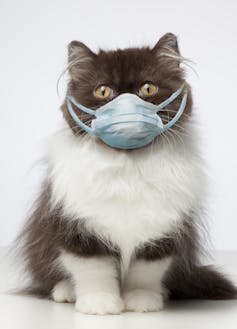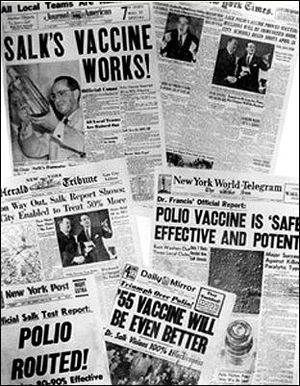COVID-19 and Pet Abandonment: Is History Repeating Itself?

I recently received a letter from one of my feline fans, who has been reading and enjoying “the good parts” of my book, The Cat Men of Gotham: Tales of Feline Friendships in Old New York. He says it’s been a great read during the Covid pandemic!
Trooper Gordon, described by his owner as a “three-legged pink-nosed tabby,” loves the happy stories in the book, but he is avoiding “the sad parts” that address the inhumane ways in which cats were treated in Old New York.
However, Trooper is a smart kitty — smart enough to notice that history appears to be repeating itself. So, he has asked me to share one of the “bad parts” of my book in order to provide a historical reference for the current situation regarding pets and the coronavirus (COVID-19).
You see, Trooper’s human, Merrie, runs a small animal rescue group in New York State. Running a trap, neuter, and release (TNR) program is challenging enough during normal times, but these days, the volunteers are beyond overwhelmed with all of the calls they have been receiving from pet owners who are frightened and confused to the point of hysteria, thinking their cats or dogs are able to spread the COVID virus to them and their loved ones.
Even worse, the volunteers are seeing a sudden rash of pet abandonment due to misinformation and irrational fears surrounding COVID-19.
Merrie’s animal rescue group is not the only one getting calls from panicky pet owners. According to Dr. Stanley Coren, Professor Emeritus at the University of British Columbia, many animal rescue societies around the world are reporting an uptick in the number of pets being surrendered or abandoned because people are misinformed and wrongly believe that animals may carry, or spread, the virus. Numerous dog and cat advocacy groups across the country are also getting questions from pet owners — some hysterical — about whether people can be exposed to the virus by petting a dog or a cat.
For cat owners, the concerns may be even greater, especially in light of recent news about several tigers and lions at the Bronx Zoo that developed dry coughs and other symptoms of the virus after being exposed to a zookeeper who was “asymptomatically infected with the virus.” (Take note that the zookeeper transmitted the virus to the animals, and not the other way around.)
Although there is no simple answer — and doctors and scientists are still learning about COVID-19 and its effects in humans — numerous world experts say there is no reason to keep your paws off your own cat or dog as long as you have no symptoms of the virus or have not tested positive for COVID-19. (Just as you should isolate yourself from people when you have the virus, you should also play it safe and stay away from your pets if you are ill or suspect that you are infected with COVID-19.)
A very small number of real-world cases have shown that cats and dogs can become infected with the coronavirus, but research and current evidence suggests that getting the virus from a dog or cat is extremely unlikely. It should also be comforting for pet owners to know that while COVID-19 has been infecting people around the world for over three months, there are no reports of cat or dog fatalities despite the many thousands of infected people who live with pets.
Words Are Falling on Deaf Ears

In recent weeks, various animal and human health organizations have been trying to assure pet owners by stressing the fact that there are currently no reported cases of people catching the coronavirus from cats and dogs (or any other animal).
According to the Centers for Disease Control and Prevention (CDC), although the first COVID-19 infections were linked to a live animal market, the virus is now spreading from person to person, and not animal to person.
“There is no evidence that a dog, cat or any pet can transmit COVID-19,” both the CDC and World Health Organization (WHO) state on their respective websites. American Veterinary Medical Association (AVMA) Chief Veterinary Officer Gail Golab concurs, adding, “We’re not overly concerned about people contracting COVID-19 through contact with dogs and cats.”
Sadly, it appears as if many of these words are either not reaching pet owners, or they are falling on deaf ears. Which is exactly what happened just over 100 years ago — with tragic results for the pet dogs and cats. (Warning to Trooper and other readers: here comes the bad part.)
Brooklyn, 1916: The Polio Epidemic

On June 6, 1916, 10-month-old John Pamaris of 53 Garfield Place and 2-year-old Armanda Schuccjio of 5014 7th Avenue — two children in the Italian community just east of the Gowanus Canal in Brooklyn — were reported to the New York City Health Department as having symptoms of polio (then called “infantile paralysis”). These two reported cases, along with four more cases reported on June 8, served as a warning of the impending epidemic.
Within a few weeks, there were 24 cases in Brooklyn, most of them in the area bounded by 7th Avenue and Third, Degraw, and Nevins streets. By the end of June there were 646 reported cases of polio in that borough, plus about 150 cases throughout the other boroughs of New York City.
At the time, there was no good theory for how the poliovirus was spread. Since the outbreak began in the Italian community, some, including New York City’s health commissioner, Dr. Haven Emerson (a great-nephew of Ralph Waldo Emerson), thought the disease had been brought to America by Italian immigrants.

Others in the health community speculated that it was spread by insects, while some early reports suggested that domestic cats and dogs were to blame. For example, an article in The New York Times published on July 30, 1916, advised people to wash their pet cats and dogs in a two percent solution of carbolic acid — just in case pets were the cause of infantile paralysis.
The polio epidemic caused widespread panic throughout the city. Movie theaters and libraries were closed, meetings and public gatherings were canceled, and children were kept from parks, pools, and beaches. Thousands of the well-to-do fled the city or sent their children to live with relatives in other states. Sound familiar?
The 1916 epidemic also caused widespread irrational behavior. Many people, wrongly convinced that cats and dogs were responsible for spreading the disease, released their pets to the streets. ASPCA Superintendent Thomas F. Freel tried to convince the public that pets did not spread infantile paralysis, but his words fell on deaf ears. On July 26, the New York Times reported that the ASPCA in New York City was sending up to 450 animals to the lethal chambers every day.

Freel told the New York Times, “Since the beginning of the alarm over infantile paralysis, we have been receiving on an average of 800 requests a day for our men to call for unwanted domestic pets, mostly cats, in spite of the statement issued by Health Commissioner Emerson that cats do not carry the germs of the disease.” (To be sure, the ASPCA had always put thousands of unwanted stray cats and dogs to death every year, but the uptick was very noticeable, especially for cats, in 1916.)

Freel theorized that more cats were rounded up because of a concurrent downturn in the economy. “When people have to economize,” he explained, “the first thing they decide to do without is the cat and out she goes.”
By the end of October, more than 22,000 dogs and almost 270,000 cats had been needlessly disposed of in the society’s gas chambers. The short-lived polio epidemic also took a large toll on human life, with over 27,000 reported cases and more than 6,000 deaths in the United States (about 2,400 deaths were reported in New York City).
Two years later, when the “Spanish flu” epidemic struck the United States, people appeared to be more confident with the science of the disease, and thus, did not blame their pets for spreading the virus. I could not find any news articles about an uptick in pet surrenders in 1918-1919, albeit, I did find this interesting article on Atlas Obscura about pet parents putting masks on their cats during the epidemic. There are a couple of great old photos with mask-wearing families and their cats, so check it out.
More Information for Pet Parents
I am not a doctor, scientist, or veterinarian, so I want to strongly encourage you to read more about pets and COVID-19 in order to make rational, informed decisions. The CDC, AVMA, and the Humane Society of the United States have a lot of information for pet owners, so those are good places to start.
Trooper and I hope the facts and research-based information will help you feel more confident in continuing to provide your pets with safe, loving homes. Now more than ever, our pets need us to keep loving and protecting them — and we need them to keep bringing calmness and joy into our lives.





Thank you Trooper, for bringing this sad topic to light. It is good to read the bad parts every so often, to remind us to use scientific research to help form our actions.
Thank you Peggy for using a light touch on an awful time for our pets. Where I live, the shelters have been drained of furry animals; they are all in foster homes helping individuals and families to unwind. As a side effect of this, it has helped several pets to find forever homes due to the animals’ blossoming personalities in a home setting finding their way to social media.
I would never abandon my seven feline friends, though they just slaughtered a poor toad who thought that she had found a nice place in one of the garden ponds. The cats fortunately avoid strangers, with one exception, Princess Min Ki, a 15 year old pretty, proud, and self assured tabby. So I told all neighbors not to touch Princess Min Ki, because she might have been infected with SARS-CoV-2.